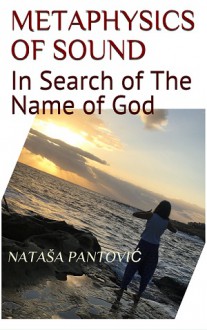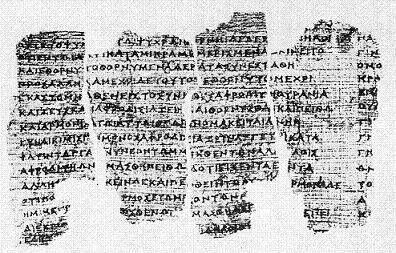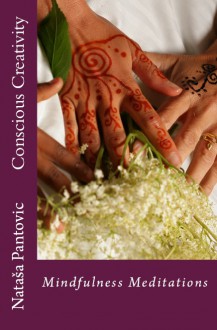


Learning from a Scientific Paper, March 2021, Runes from Lány (Czech Republic) - The oldest inscription among Slavs. An Ancient Debate #archeology #Slavic Since the 19th century, Slavonic scholars had theorized that Slavs had achieved literacy pre-ChristArt, Education, Symbols and Signs, Spirituality
An Ancient Debate #Archeology #Slavic #History. Since the 19th century, Slavonic scholars had theorized that Slavs had achieved literacy pre-Christ.
A Czech archaeologist, Alena Slamova, was routinely cleaning the excavations from a dig when her sharp eye noticed unusual scratching on the surface of one fragment. So she has decided to examine it further with her colleagues, not dispose of it.

Learnings from Cyrillic Alphabet
History is a fascinating subject. Researching god or consciousness even more so! We read amazing accounts about ancient wisdom traditions such as Platonism, Orphism, Orthodox Christianity, and in China Taoism, and neo-Confucianism.

The insights from these traditions intersect with recent findings in metaphysics or biology. What brings the two into resonance is their mutual commitment to speak of the matter as alive. The four elements expressed through trinity that are defined by entangled triangle of relationships reflected in our language development.
Another visit to Serbia, this summer, and I was back researching the same scientific question, same puzzle that has certainly no answers yet it is an interesting exploration.
The genetic origins of Etruscans are mixed between aboriginal people of the region (Slavs?) and people from Europe predominantly Spain. The aboriginal population may have settled in Balkan millennia prior to the invasion.

The Etruscans occupied the region to the north of Rome, The Romans were their conquerors.
The Greek historian Herodotus tells us that the Etruscans came from Lydia. Sure enough historians argue who are the Lydians. Herodotus tells us of their ships and multitude, claiming that the half of the population left under the leadership of Tyrrhenus. Another Greek historian, Dionysius of Halicarnassus, in his Early History of Rome also claims that the Etruscan were the aboriginal inhabitants of their area. Slavs?
1. Northern Origins
2. Oriental (Near-eastern) Origins
The aboriginal peoples of North Italy could have been Slavs. The Adriatic Sea, the sea to the east of Italy, bordering Croatia, Slovenia and Montenegro, all Slavic states, was named after the Etruscan port of Adria. The funerary practices of the people of North Italy has the parallel to the Vinča Culture. The Etruscans cremated their dead, a practice also known in the Danube Culture, no grave yards have been found near the settlements for thousands of years.
This very vibrant culture hosted different nationalities. In the Etruscan ruins there are objects from Greece, North Africa, and southern France. The Etruscan traders brought those craft objects to Etruria. The major exports of Etruria was copper and iron from the local mines, the same found with their Northern neighbors.

The question became more intriguing when, in the nineteenth century, it was discovered that most of the languages of Europe belonged to one big language family called Indo-European but Etruscan was not one of them. Is this rightly so?
The linguist claim that Etruscan was not a member of the Indo-European language family was challenged by some Slavic archelogy and linguistic researchers. These Balkan Slavs, find the inspiring relationship between words, just introducing the now, in scientific circles, lost Š, Đ, Č, Ć, Ž, DŽ.

The analysis of the alphabet after reading this interesting book -

Asked by @Sepherd to create The Best #booksreviews On The Ancient #Mediterranean #Classics Beyond The Usual! The Books I Picked & Why...
No. 1 is Language of Amarna - Better known as Amarna Heresy, a philosophical discussion from Ancient Egypt's #Babylon about Monotheism and Trinity written 3,000 years ago.
My No. 2 is The Secret History of Egypt at the Time of the Exodus by Osman, a British #Egyptologist born in Cairo who says that Moses was born in Egypt and that Tut-Ankh-Amun had a very similar “story” to Jesus.
My personal favourite of Ancient Mediterranean classics, printed more than 5,000 years ago is Inanna, Lady of Largest Heart: Poems of the Sumerian High Priestess Enheduanna Enheduanna (who wrote in Sumerian), dating to around 2400 BC. Enheduanna is the earliest known Female Poet. She was the High Priestess of the goddess Inanna and the moon god Nanna (Sin). She lived in the Sumerian city-state of Ur in Syria.
#4 is The Derveni Papyrus: #Cosmology, #Theology found in Macedonia now in Thessaloniki Museum, Greece.

Published in 340 BC it is an Orphic book of mystical initiations. The scroll was carefully unrolled and the fragments joined together, thus forming 26 columns of text. which was used in the mystery cult of #Dionysus by the 'Orphic initiators'. It is a philosophical treatise written as a commentary on an Orphic poem, a Theogony concerning the birth of the gods, compiled in the circle of the #philosopher AnaXagoras.
The scroll contains a philosophical treatise on a lost poem describing the birth of the gods and other beliefs focusing on Orpheus, the mythical musician who visited the underworld to reclaim his dead love. The Orpheus cult tells us of a single creator god, of the trinity, of resurrection, of a virgin's child, back in the Macedonian region of Ancient Greece that was the Ancient Europe during 400 BC... Both Orpheus and Heraclitus compose allegories about the secrets of nature and of God. In the Orphic cosmogony, he was writing only for the "pure in hearing".
